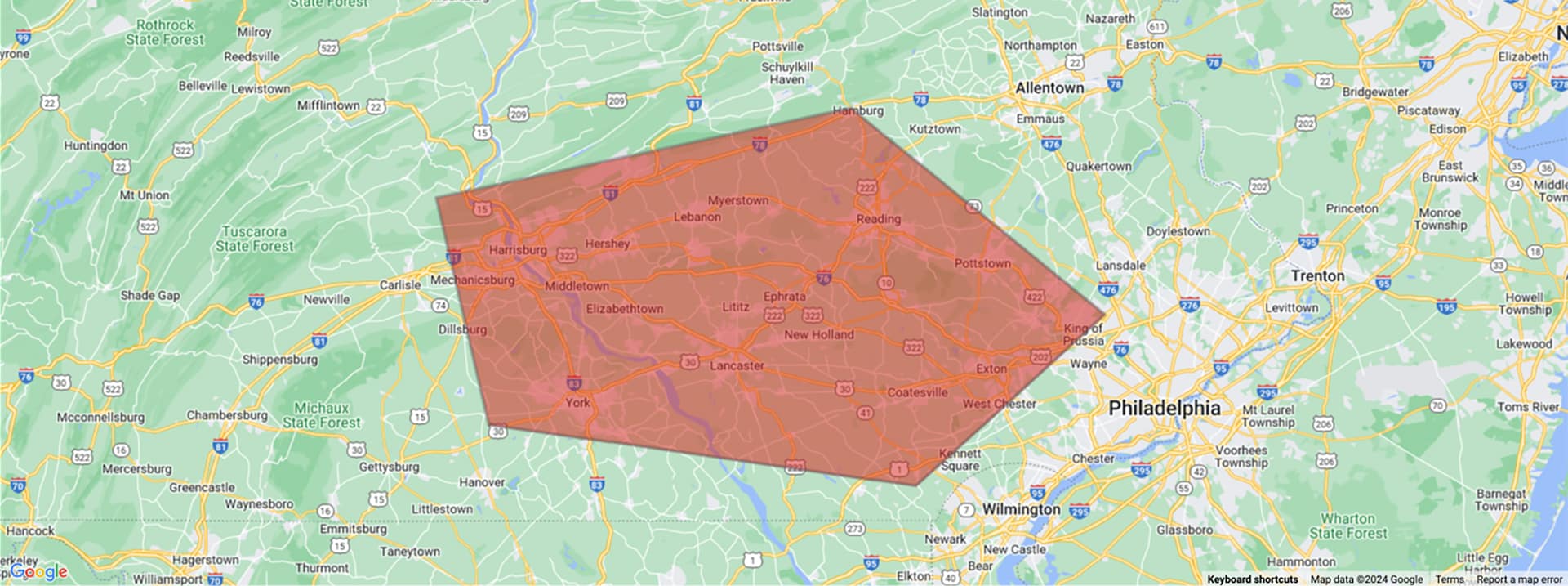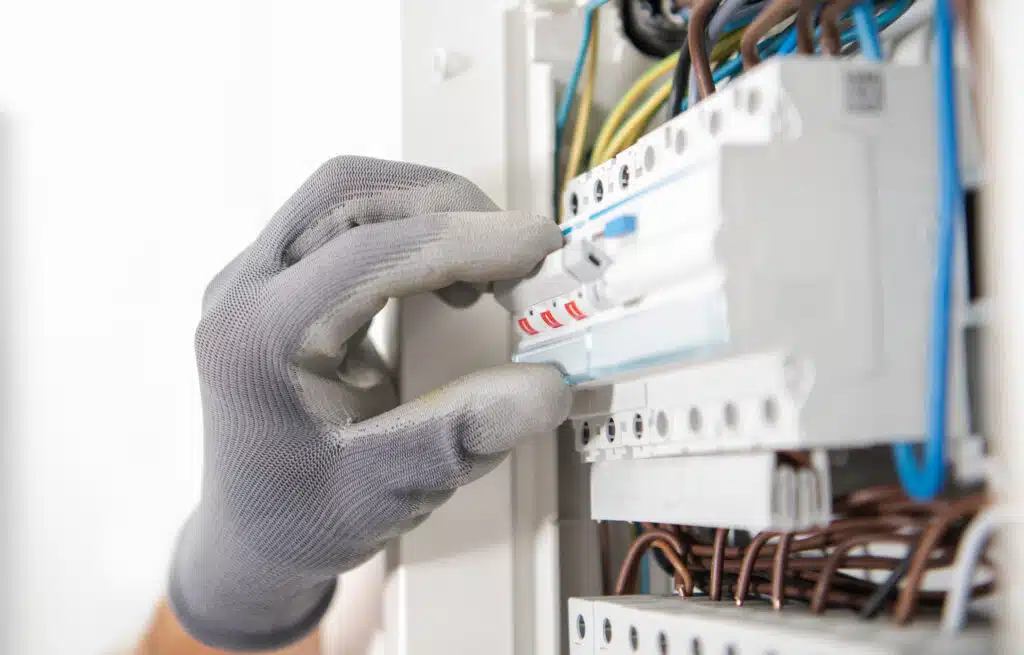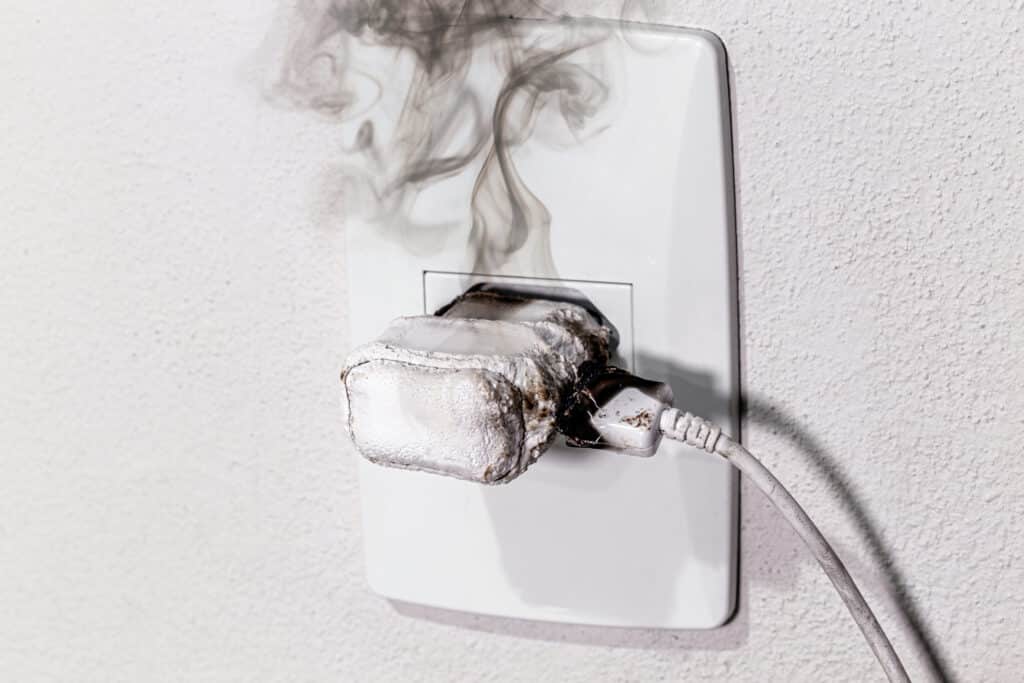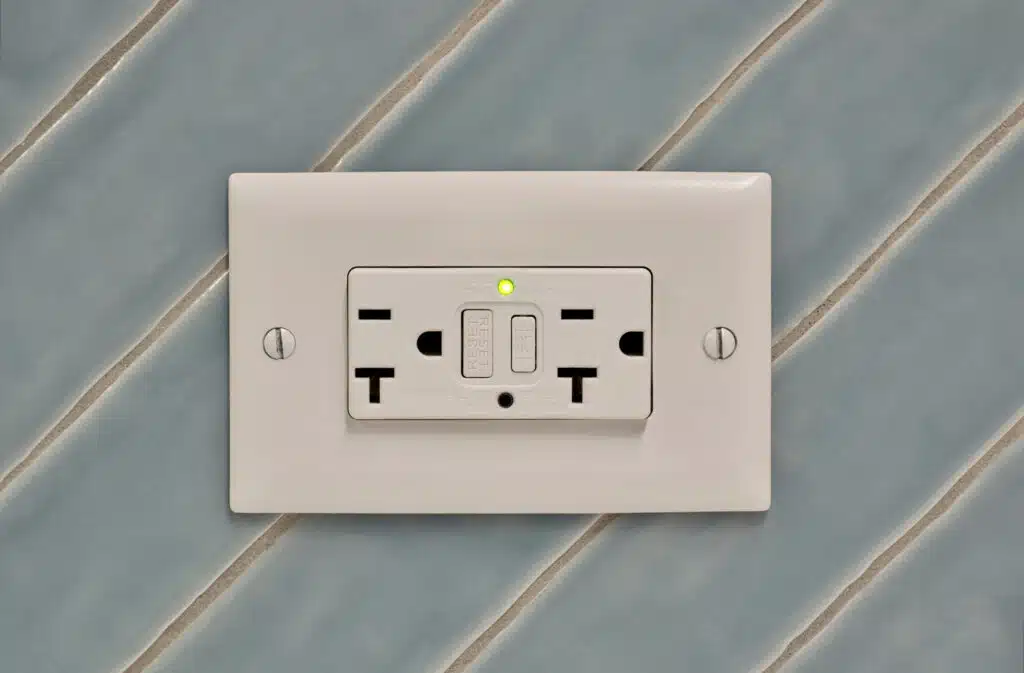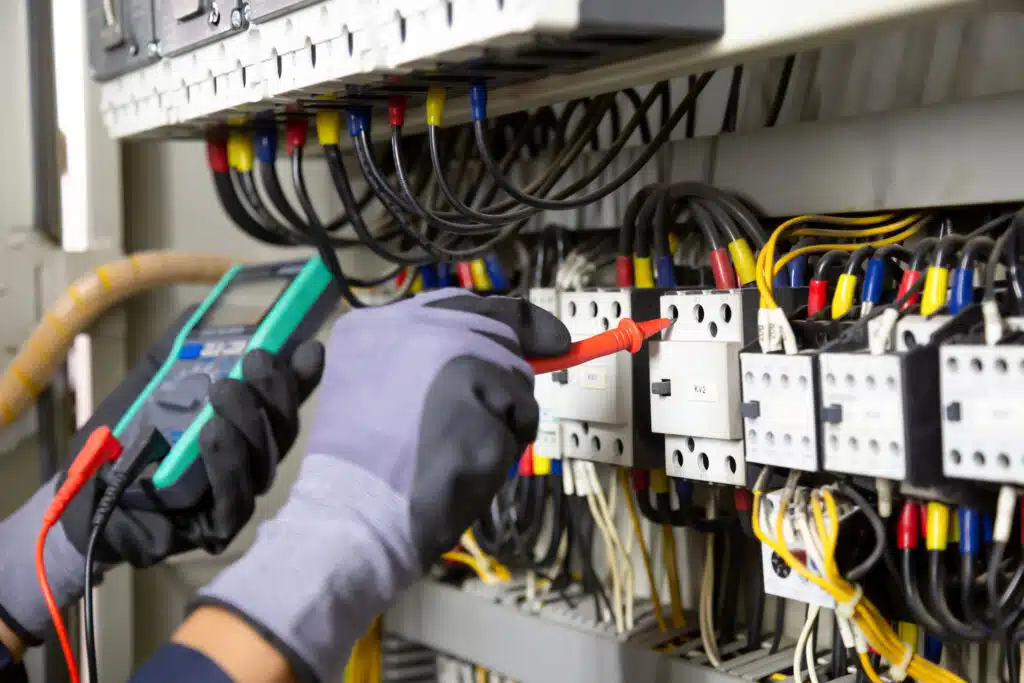Power surges are sudden spikes in electrical voltage that can seriously damage your home’s appliances and wiring. In York, PA, where changing weather and aging infrastructure are common, understanding the causes of power surges is crucial for homeowners. These unexpected bursts of energy can fry electronics, damage HVAC systems, and even pose fire risks if not addressed.
Many homeowners assume that power surges only happen during big storms, but that’s just one part of the picture. In reality, surges can occur at any time , often without any obvious warning. They may come from internal sources like large appliances or external ones such as damaged power lines. The key to protecting your home lies in knowing what causes these surges and how to prevent them.
Electrical damage from surges isn’t always visible at first. You might notice flickering lights or that your devices aren’t working quite right. Over time, these small signs can lead to major issues. Fortunately, with the right electrical solutions and surge protection, you can greatly reduce the risks.
In this post, we’ll explore the seven most common causes of power surges and show you how to avoid them. Whether you’re living in a historic home or a newer build in York, PA, this guide can help protect your family and electronics from the dangers of electrical surges.
Lightning Strikes and Weather-Related Power Surges
Power surges are often linked to severe weather, especially lightning strikes. In fact, lightning is one of the most powerful external causes of surges in residential electrical systems. When lightning hits a power line, it can send an overwhelming amount of voltage through the line and directly into your home’s wiring. Even if the strike happens a mile away, the surge can travel through the grid and wreak havoc on anything plugged in.
As we enter March, cities like York, PA start to experience the first wave of spring thunderstorms. These unpredictable weather patterns increase the chances of lightning-related surges. During these storms, the risk isn’t just the bolt itself, it’s the chain reaction that follows. Downed lines, transformer damage, and grid interruptions can all contribute to voltage spikes.
Power surges caused by weather often go unnoticed until appliances stop working or circuit breakers trip. Unfortunately, by the time you realize it, the damage is done. Sensitive devices such as TVs, computers, and smart home hubs are especially vulnerable. That’s why preparation is key.
Homeowners in York and surrounding areas should consider professional surge protection as a preventive measure. While you can’t control the weather, you can control how well your home is protected from it. A qualified electrician, like those at Mister Sparky of Lancaster, PA, can help you identify risks and install systems that guard against external surges caused by lightning and storms.

High-Powered Appliances and In-House Electrical Load
Power surges don’t always come from outside your home. In fact, some of the most common surges originate from inside, specifically from high-powered appliances. Devices like air conditioners, refrigerators, dryers, and space heaters all require significant energy to start and stop. Each time they cycle on or off, they can disrupt the steady flow of electricity and trigger a small, momentary surge.
These internal power surges might not cause instant damage, but over time, they can shorten the lifespan of your electronics. Constant exposure to fluctuating voltage levels stresses circuit boards and sensitive components, leading to eventual failure. This is especially important for households in York, PA where seasonal appliances like space heaters are often still in use during March.
Homes with older or overloaded electrical systems are particularly vulnerable. When too many high-powered devices run at once, the sudden draw of electricity can cause voltage spikes. This internal pressure not only affects the appliance causing the surge, but can also send excess energy through shared circuits, damaging other devices along the way.
Working with a professional electrician is the best way to determine if your system can safely handle your current electrical load. Mister Sparky of Lancaster, PA regularly helps homeowners assess their wiring, upgrade panels, and install surge protection designed to manage internal voltage fluctuations. This proactive approach can save you from replacing expensive appliances down the line.
Power Grid Switching and Utility Malfunctions
Power surges can also originate from outside your home through issues with the local power grid. One common cause is utility switching. When power companies reroute electricity during maintenance or outages, the sudden change in voltage levels can create surges that reach your home. These surges are often unpredictable and happen without warning.
In areas like York, PA, grid-related malfunctions can occur more frequently during seasonal transitions. As demand increases or weather events affect infrastructure, utilities may need to shift power loads between substations. While this keeps the system running, it can cause voltage spikes that damage your appliances and electronics if proper protection isn’t in place.
Utility equipment failures are another frequent source of surges. A blown transformer or a fault at a substation can send a wave of excess voltage down the line. These events are out of your control, yet they can leave a lasting impact on your home’s electrical system.
Unfortunately, standard home insurance policies may not always cover damage caused by utility-related surges. This makes proactive protection even more important. Mister Sparky of Lancaster, PA offers surge protection solutions designed to guard against both internal and external voltage spikes, including those caused by grid issues.
With a professional inspection, you can identify potential vulnerabilities and upgrade your home’s defenses. Don’t wait for the next grid failure to learn the hard way, prepare now and protect your investment.
Faulty or Outdated Wiring
Power surges often find their way into homes through weak points in the electrical system, and faulty or outdated wiring is one of the biggest culprits. Older homes, like many found in York, PA and throughout Lancaster County, may still rely on outdated wiring that wasn’t designed to handle today’s high electrical demands. These aging systems are more prone to short circuits and uneven power flow, increasing the risk of surges.
When wires degrade over time, their insulation can break down, connections can loosen, and circuits may become overloaded without proper warning. All of these issues can lead to sudden voltage spikes. Even something as simple as turning on a microwave in a home with old wiring can trigger a small, damaging surge that affects other devices.
Faulty wiring can also create fire hazards. If a surge causes a spark near damaged or exposed wires, it could lead to dangerous consequences. That’s why it’s crucial to have your home’s wiring inspected regularly, especially if your property is over 30 years old or hasn’t been updated to current code standards.
Mister Sparky of Lancaster, PA specializes in identifying these hidden risks. Our professional electricians offer comprehensive inspections to detect worn wiring, outdated panels, and improper grounding, all of which can contribute to recurring power surges. If repairs or upgrades are needed, we’ll ensure they’re completed safely and up to code.
Staying proactive about your home’s wiring can help prevent long-term damage and give you peace of mind during unpredictable power conditions.
Overloaded Circuits and Improper Installations
Power surges can also stem from overloaded circuits and poorly installed electrical components. When too many devices draw power from the same circuit, the electrical system can become overwhelmed. This strain causes fluctuations in voltage, increasing the chances of small, repeated power surges that wear down electronics over time.
In many older homes around York, PA, electrical systems weren’t designed to handle the number of devices we now rely on daily. From smart TVs to multiple phone chargers, the demand has grown, but the infrastructure hasn’t always kept pace. Plugging too many appliances into a single outlet or using extension cords as permanent solutions only adds to the problem.
Improper installations are another hidden danger. If outlets, breakers, or light fixtures are installed incorrectly, they can create unstable connections that interrupt the flow of electricity. Unprofessional or DIY electrical work often lacks proper grounding and may violate safety codes, making your home more vulnerable to surges.
These types of power surges may not cause immediate failure, but over time, they degrade the performance and reliability of your electronics. And without professional evaluation, most homeowners don’t even realize their system is at risk.
Mister Sparky of Lancaster, PA provides expert electrical assessments to detect overloaded circuits and improper installations. We help homeowners in York and surrounding areas make necessary upgrades to avoid ongoing surge issues and improve overall safety. With professional help, you can ensure your system meets today’s electrical demands without compromising your devices, or your home.
Downed Power Lines and Tree Interference
Power surges can also be triggered by external physical damage to power lines, especially from fallen trees or high winds. When a power line goes down, the sudden loss or redirection of electrical current can send a jolt of excess voltage through connected homes. This can result in widespread power surges that affect multiple properties at once.
During March, York, PA often experiences strong winds and late winter storms that knock down tree limbs and debris. These conditions increase the risk of line damage and, by extension, surges that travel quickly through the power grid. Even if the downed line isn’t on your property, your home could still be affected.
Tree branches brushing against lines during windy conditions can also cause short, repeated disruptions. These minor interruptions may not trip your breaker, but they can still produce mini-surges that slowly degrade sensitive electronics. Over time, these small events add up, shortening the life span of everything from your Wi-Fi router to your washing machine.
While you can’t prevent a storm, you can reduce your home’s exposure to damage caused by line disturbances. Whole-home surge protection offers a critical first line of defense. Mister Sparky of Lancaster, PA recommends regular inspections of nearby trees and vegetation, along with surge solutions designed to handle unpredictable external events.
Protecting your home from nature’s surprises is an investment in both safety and peace of mind, especially during storm-heavy months like March.
How to Avoid Power Surges: Whole-Home Surge Protection
Electrical spikes can strike without warning, but that doesn’t mean you’re left without options. These sudden voltage increases often damage electronics and appliances before homeowners even realize what’s happened. One of the most effective ways to defend your home is by installing whole-home surge protection. This built-in solution acts as a constant line of defense, protecting your entire electrical system,not just a few devices.
Unlike plug-in surge strips, whole-home systems are hardwired into your main electrical panel. They shield all outlets and wired components from excess voltage, whether it’s triggered by a lightning strike, grid malfunction, or heavy appliance cycling. These protection units respond in milliseconds, redirecting dangerous energy away from sensitive equipment. This fast action helps preserve everything from smart devices to HVAC systems.
In communities like York, PA, where March weather can be unpredictable and power infrastructure is often outdated, having a strong electrical defense is essential. During seasonal transitions, both heating and cooling systems may run, increasing the overall demand on household circuits. This elevated activity raises the risk of voltage irregularities and makes consistent protection even more important.
Mister Sparky of Lancaster, PA offers customized surge protection solutions tailored to your home’s unique electrical needs. Our certified electricians will inspect your system, identify any vulnerabilities, and install the appropriate equipment to ensure safety and compliance. With the right protection in place, your home stays secure, regardless of what’s happening outside or on the power grid.
Whole-home surge protection isn’t just about safeguarding electronics, it’s about maintaining the integrity of your entire electrical system. It’s a smart, long-term investment that helps you avoid costly damage and keeps your home running reliably all year round.
Protecting Sensitive Electronics and Appliances
Power surges can silently destroy your most valuable electronics. Devices like smart TVs, gaming consoles, computers, and home office equipment are especially vulnerable to even the smallest spikes in voltage. These sensitive appliances have delicate internal circuits that can’t withstand inconsistent power flow, making surge protection a must-have in every home.
While many homeowners rely on plug-in surge protector strips, these only offer limited coverage. They can help with minor surges from appliances or small fluctuations, but they won’t stop the large surges caused by lightning, grid issues, or wiring faults. That’s why they should be used in addition to, not instead of, whole-home surge protection.
Think about how many connected devices you use daily. From internet routers to smart thermostats, modern homes in York, PA rely on technology more than ever. A single surge can disrupt your routine, wipe out data, and lead to costly replacements. With March weather bringing wind and storm-related risks, now is the perfect time to reassess your protection.
At Mister Sparky of Lancaster, PA, we help homeowners choose the right combination of whole-home and point-of-use surge protection. We recommend layering protection to keep every outlet, and everything plugged into it, safe from voltage spikes.
Protecting your electronics is more than just convenience, it’s about preserving the tools you rely on every day. With the right systems in place, you can keep your home running smoothly no matter what’s happening with the power supply.

FAQ: Power Surges
1. Can power surges damage my HVAC system?
Yes, power surges can absolutely damage HVAC systems. These units contain control boards and motors that are sensitive to fluctuations in voltage. A strong enough surge can short out the electronics, leaving you with expensive repairs or a total replacement.
2. Are surge protectors really worth it?
Surge protectors are one of the most cost-effective defenses against power surges. Whether it’s a small spike from an appliance or a large surge from a lightning strike, these devices help prevent damage to your electronics and appliances. Whole-home surge protectors offer broader protection than plug-in strips and defend your entire electrical system.
3. What’s the difference between a surge protector and a power strip?
While they may look similar, a surge protector is designed to guard against power surges, while a basic power strip simply expands the number of outlets. Surge protectors use built-in components to absorb excess voltage and redirect it away from your devices.
4. How can I tell if my home experienced a power surge?
Common signs of power surges include blinking digital clocks, tripped breakers, or appliances that suddenly stop working. You might also notice scorch marks near outlets or a burning smell, especially if the surge was severe. Some power surges cause hidden damage that may not appear until weeks later, making early detection difficult.
5. Who should I call if I suspect a surge caused damage?
If you think a power surge has affected your home, call a professional electrician immediately. Mister Sparky of Lancaster, PA can assess your electrical system for signs of surge damage and offer recommendations for protection. Waiting too long after power surges can lead to more extensive electrical problems or even safety hazards.






